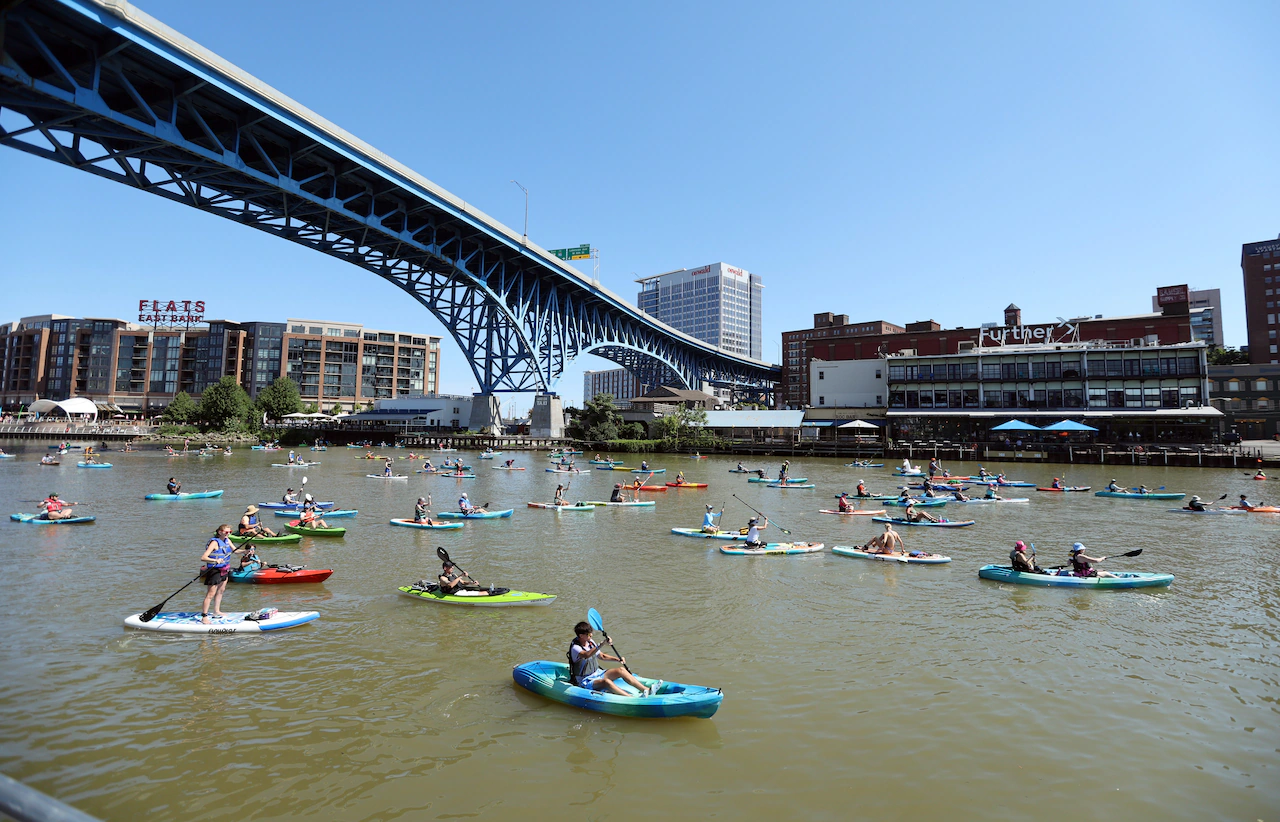
CLEVELAND, Ohio – Following a recent open-water swim in the once-polluted Chicago River, the question was raised whether Cleveland’s Cuyahoga River could host a similar event, and if anybody was thinking of pulling it off.
Despite significant improvements in water quality over the decades, local experts and officials believe the river is not yet ready for swimmers, citing water quality, safety concerns, and logistical hurdles. And nobody said they were prepared to plan such an event.
However, recent international interest and the success of other cities offer a potential blueprint for the future. These are the 5 takeaways from the original article.
1. Experts Say the Cuyahoga Is Not Ready for Swimmers
Despite the inspirational swim in Chicago, local experts are unified in their assessment that the Cuyahoga River is not prepared to host an open-water swim. Jim Ridge of the nonprofit Share the River, which organizes the Blazing Paddles Paddlefest on the Cuyahoga, questioned if the water quality is sufficient and how swimmers would coexist with freighters and other boat traffic on the U.S. Coast Guard-regulated waterway,
Similarly, Chuck Beatty, director of the Brogan Open Water Classic on Lake Erie, stated that while the idea has crossed his mind, organizers of such an event would “have to get really lucky picking a day where the water quality is good.” The general consensus is that significant work remains before an open swim could be considered safe.
2. Water Quality Remains a Primary Obstacle
The Northeast Ohio Regional Sewer District, which is more than halfway through a $3 billion project to reduce sewage overflow, provides a mixed outlook on water quality. A district spokeswoman, Jenn Elting, noted that during dry weather, the river “would be considered safe from a bacteria standpoint.” However, she advised against swimming because of “a lot of other gunk in the water,” including sediment, algae, organic material, and stormwater runoff. Experts believe that while the river is cleaner, prolonged immersion may still be unsafe.
3. A Path Forward Exists Through International Collaboration
A potential roadmap for making the Cuyahoga swimmable has emerged from an international organization called Swimmable Cities. Its head, Matthew Sykes, believes any river can become swimmable if a city sets a long-term goal, similar to how Paris prepared the Seine for the Olympics or how London aims to make the Thames swimmable by 2034. Sykes had an chance encounter recently with Cleveland Mayor Justin Bibb at a conference in New York City, after which Sykes said he plans to connect with Cleveland’s director of sustainability. The mayor’s office confirmed a continuing conversation as part of Bibb’s commitment to exploring ideas for the city’s waterfront.
4. Chicago’s Success Offers a Practical Blueprint
Chicago’s recent river swim, the first in nearly 100 years, serves as a powerful example of what is possible. Doug McConnell, CEO of Chicago River Swim, explained that the biggest challenge was overcoming negative public perception. Organizers used data from three different sources to ensure water safety on the event day. To address concerns about legacy chemicals in the riverbed sediment, they used innovative, GPS-controlled buoys that did not need to be anchored, thus avoiding stirring up pollutants. McConnell framed the event as a “victory lap” celebrating the river’s cleanup, suggesting that cities like Cleveland have an opportunity to do the same.
5. Navigational and Physical Hazards Pose Additional Risks
Beyond water quality, experts point to other dangers in the urban section of the Cuyahoga. Ryan Ainger, a river ranger at the upstream Cuyahoga Valley National Park, highlighted the presence of woody debris as a significant hazard for swimmers. Also, the deeper navigation channel downtown is routinely dredged to allow large ships to pass, and the presence of these giant freighters creates a logistical and safety challenge for coordinating an open-swim event. Any future plan would need to slowly roll out to ensure both public health and safety.



